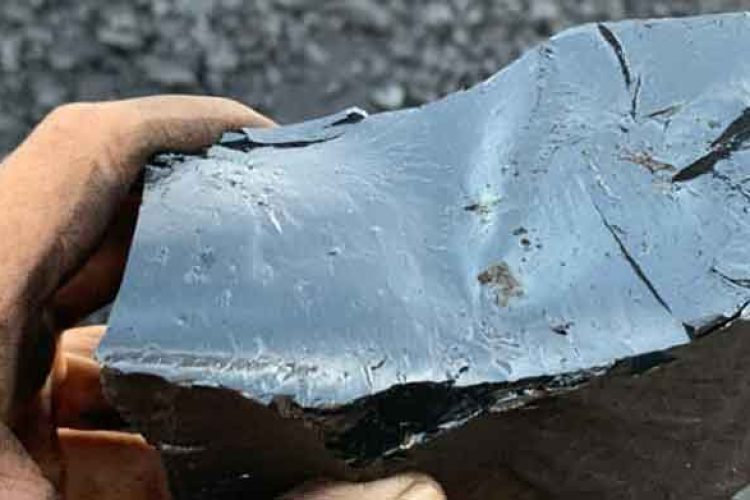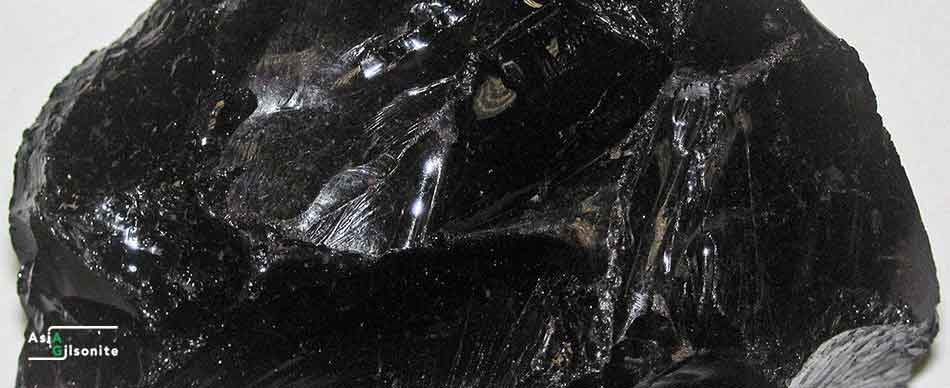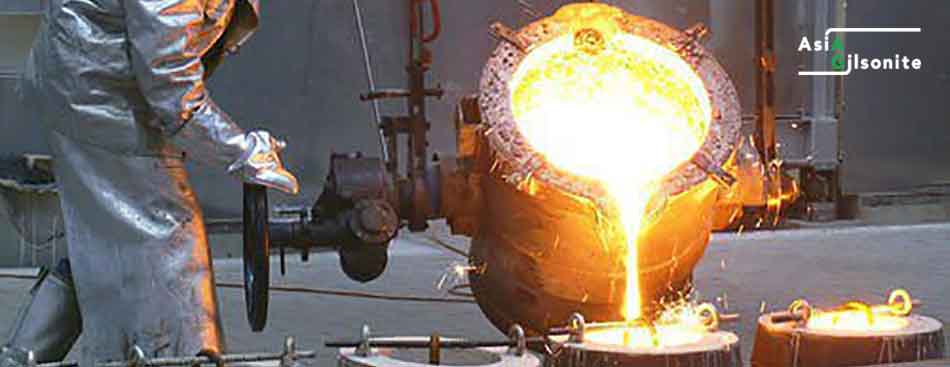In this article we try to examine this important question: What is the difference between gilsonite and bitumen? As you know, these two organic substances are different from each other. Therefore, in the following discussion, we will fully explain the difference between gilsonite and bitumen. Stay with us.
Difference between gilsonite and bitumen:
Bitumen, Gilsonite, and Unitaite are all names for natural bitumen (from the Unitaite mountains in the US). Gilsonite is one of the crude oil derivatives that reaches the earth’s surface due to geoglogical changes and the need to locate a suitable and dry space: to change. This material is an essential industrial resource that is only found in a few countries.
Oil migration from oil deposits to the earth’s surface layers produces natural bitumen. The current crude oil in oil reserves is always under hydrostatic pressures, which causes this material to be on the lookout for a route out. As a result, it travels towards the earth’s surface through the cracks, fractures, and faults in the rock. The crude oil eventually changes from kerosene to asphalt and then to a substance that resembles pirobitumen in appearance. The mixture then solidifies, resulting in black bitumen. Pirobitumen is a term used to describe the final stage of oil maturation. Bitumen is a generic word for a set of combustible, solution-based materials made from heavy hydrocarbons.
Gilsonite is a natural hydrocarbon that is brittle and glossy, and in high purity, extremely brittle. The ore is black, with a chocolate brown powder. Coal (fossil fuel) and tar are physically and chemically comparable materials (oil products). The softening and melting properties before burning distinguish it from coal, while the softening and polar molecular features distinguish it from tar.
While Gilsonite is chemically similar to asphalt, it has some key distinctions, including a greater bitumen softening point than oil-derived asphalt, which distinguishes it as a distinct product. Gilsonite’s unique physical and chemical properties have made it a useful product in a wide range of industries. Today, more than 160 products are derived from this substance, the most important of which are used in the ink industry, oil drilling (cementing the wells), drilling mud, casting, optimising special asphalts, and insulation.
The distinction between gilsonite and bitumen as nouns is that gilsonite is a type of asphalt from Utah, whereas bitumen is a mineral pitch; a black, tarry substance that burns brightly; jew’s pitch occurs as a plentiful natural product in many places, such as on the shores of the Dead and Caspian Seas; it is used in cements, pavement construction, and other applications.
Gilsonite is a mineral product created from crude oil after 1000 years underground, where the light stuff vaporized and the hard and heavy components remained. Wax and ash are present, as well as Sulphur and non-aromatic minerals such as calcium, potassium, silica, and other minerals. Gilsonite has a brilliant and brittle appearance, as well as a strong odour. Gilsonite has a density of more than 1.06, and because of the high wax content (which hasn’t been polished), when mixed with other materials and the temperature drops, it quickly solidifies, making it impossible to work with.
When hard asphalt sealant or oxidized bitumen is heated, there is no wax on the surface to solidify at low temperatures, allowing workers to work on it and allowing it to flow towards the softening point. Since the raw material came from a refinery, the Sulphur concentration has been controlled and all dangerous constituents have been isolated before blowing in the oxidization tower. During production, there is control over the softening point and penetration, and it can be produced according to order.
Gilsonite’s Applications:
Controlling Drilling Fluid Loss:
Gilsonite has been utilized as a drilling fluid addition for many years in the oilfield. Gilsonite has been utilized to battle borehole instability issues, offer lubricity, particularly in heavily deviated holes, and more recently as a bridging agent to combat differential pressure sticking and provide a law invasion coring fluid in various grades and formulas. By creating a thin wall cake and an inter-matrix filter cake, correctly formulated Gilsonite products can prevent hole collapse in formations containing water-sensitive, sloughing shales and alleviate stuck pipe problems.
Sector of Asphalt and Road Paving:
Gilsonite is used in oil well cementing and drilling mud fluids. Gilsonite is a common ingredient in oil-based drilling muds used in shales and other difficult geological formations. It comes in a variety of softening points and particle sizes. By stabilizing problematic shales and sealing off extremely permeable sands while lowering torque and drag, Gilsonite added to water-based drilling fluids helps decrease hole washout. Gilsonite is used to oil well cements to reduce slurry weight without sacrificing compressive strength, and it also functions as a bridging and plugging agent to cover fractures in weak formations when cementing.
Foundry Sector:
Gilsonite is used as an addition in foundry sands with coal and other components to ensure the quality of moulded parts by increasing mould release and overall finish of metal castings.
Sector of Chemical Products:
Gilsonite can be combined with a variety of other chemicals and materials to maximize its physical and chemical qualities. Binder and coating uses in the metallurgical, wood product, refractory, and other industries highlight the material’s versatility and utility. However, the importance of bitumen production in our country is due to its use in the oil and gas, construction, and casting industries. More than 160 goods contain this unique mineral, ranging from dark-colored printing inks and paints to oil well drilling mud and cements, asphalt modifiers, foundry sand additives, and a wide range of chemical products.
Natural Asphalt, Asphaltite, Uintahite, or Asphaltum are common names for this natural asphalt, which is similar to hard petroleum asphalt. Gilsonite dissolves in aromatic, aliphatic, and petroleum asphalt solvents.
Gilsonite is frequently used to harden softer petroleum compounds due to its remarkable compatibility. Gilsonite is a lustrous, black substance that resembles obsidian. It’s fragile and breaks down readily into a dark brown powder. Gilsonite, when added to asphalt cement or hot mix asphalt, aids in the production of significantly stabilized paving mixtures.
Bitumen is used in a wide range of industries. These applications are specific to each industry, and each business employs raw material, end product, and processed bitumen as needed.
Gillesonite or bitumen mines are two sources of bitumen. This is why it’s also known as bitumen. It’s found in auxiliary mines across the globe. Iraq, Australia, Russia, Canada, Venezuela, and Russia are among them. “AsiaGilsonite” Service Company is pleased with its brilliant track record in supporting Gilsonite customers and enthusiasts in buying and selling Gilsonite and hopes to play a key role in facilitating this through innovative services.
Finally, as a wrap-up, we’ll re-evaluate and answer a number of common questions:
The reactivity of gilsonite in the raw state is the most important difference between gilsonite and bitumen.
Yes, this processed material is also used in industry.
Yes, in the raw and organic state they are both the same. • What is the most important difference between bitumen and gilsonite?
• Is bitumen also used in the paint and chemical industries?
• Is gilsonite a bitumen?





